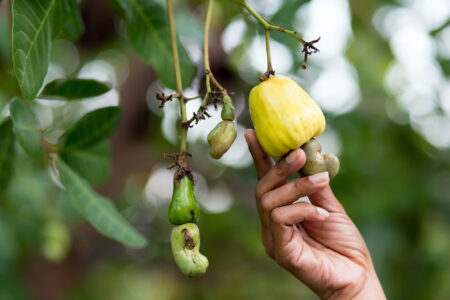- Growth attributed to increase in Foreign Direct Investment (FDI), which increased by 11.6 per cent from $8.2 billion at the end of 2020, to $9.2 billion.
- The stock of Other Investment (OI) liabilities increased from $4.9 billion in 2020 to $6.2 billion in 2022. Similarly, Portfolio Investment (PI) rose from $253.4 million to $266.4 million in 2022.
- The OI liabilities accounted for 39.2 per cent of total foreign liabilities in 2022, and were mainly in the form of loans, and currency and deposits.
Kenya’s foreign liabilities
Europe and Africa account for the biggest share of Kenya’s foreign liabilities mainly Foreign Direct Investments (FDIs), an official government report shows, as the country continues to retain its East Africa’s economic power status.
This comes on the back of an increase in the stock of Kenya’s foreign liabilities, which went up by 17.9 per cent from $13.4 billion at the end of 2020 to $15.8 billion at the end of 2022.The 2023 Foreign Investment Survey Report by Kenya National Bureau of Statistics (KNBS), Kenya Investment Authority (Ken Invest) and the Central Bank of Kenya (CBK), attributes the increase to Foreign Direct Investment (FDI), which increased by 11.6 per cent from $8.2 billion at the end of 2020, to $9.2 billion.
The stock of Other Investment (OI) liabilities increased from $4.9 billion in 2020 to $6.2 billion in 2022. Similarly, Portfolio Investment (PI) rose from $253.4 million to $266.4 million in 2022.
“FDI accounted for more than half of the stock of foreign liabilities across the period under review, with the main driver being equity and investment fund shares which increased by 18.8 per cent from Ksh777.9 billion ($5.9 billion) in 2020 to Ksh923.9 billion (Sh7.1 billion) in 2022,” the report released on Thursday indicates.
The OI liabilities accounted for 39.2 per cent of total foreign liabilities in 2022, and were mainly in the form of loans; and currency and deposits.
Net inflows of foreign liabilities increased from $452.9 million in 2020 to $176.5 million in 2021 but declined to $438.4 million in 2022.
“The increase in 2021 was mainly on account of net inflows of Other Investment, largely in the form of loans; and currency and deposits, while the decline in 2022 was on account of lower net inflows of Portfolio Investment, Financial Derivatives and Other Investment,” the report indicated.
European nations accounted for the largest share of foreign liabilities at 38.8, 35.5 and 37.1 per cent at the end of 2020, 2021 and 2022, respectively.
The stock of foreign liabilities from Europe was primarily attributable to the United Kingdom, which contributed 47.2 per cent of the total stock of liabilities at the end of 2022, with Kenya fronting the energy sector, financial services, information, communication, technology, agriculture, infrastructure, manufacturing and real estate as among key investment areas.
The European Union last year pledged to increase its investments in Kenya by millions of dollars, looking to strengthen ties in the face of competition from China.
According to the EU ambassador to Kenya, Henriette Geiger, the agreements included a $200 million pledge by the European Investment Bank to help bolster Trade and Development Bank, spearheaded by several African states, companies in eastern and southern Africa affected by the war in Ukraine and russia.
Africa has become a diplomatic battlefield between Russia and the Western nations since the invasion of Ukraine, with the EU also making steps to counter China’s Belt and Road initiative to finance infrastructure projects in developing countries.
Read also: Kenya looking for $18 billion in investments from UK investors
Other investors
Africa remained the second largest source of foreign liabilities across the reference period, contributing 29.1 per cent of the total stock.
South Africa remained the leading source of investment from Africa, on average accounting for 37.5 per cent of the total stock of liabilities from Africa over the reference period.
Other sources of investments from Africa which contributed significantly to the total stock of liabilities included Mauritius and the Democratic Republic of Congo, which accounted for 28.4 per cent and 21.2 per cent, respectively.
Mauritian companies have been making major inroads into Kenya, with both direct investments and acquisition of shares in various Kenyan companies, spanning from financial services, retail, service sector, and a recent move to tap into the capital markets space.
Recent moves include Mauritian conglomerate IBL Group’s acquisition of a 26.32 per cent stake in supermarket chain Naivas Limited for $100 million and the recent acquisition of Kenya Bottling Company Limited by Crown Beverages Limited.
Investment from Asia grew by 17.6 per cent from $1.7 billion at the end of 2020 to $2 billion at the end of 2022, with India accounting for 42.9 per cent of the total liabilities from Asia.
The total value of the stock of liabilities from America increased by 28.9 per cent from $710.2 million at the end of 2020 to $915.2 million at the end of 2022, primarily attributable to investment from the United States of America.
The recent state visit by President William Ruto to the US is expected to further grow American investments in Kenya, as Kenya seeks to grow FDIs.
President Ruto has tasked the Investment, Trade and Industry ministry to double Foreign Direct Investments in the medium-term, from the $800 million worth of FDIs attracted last year to, to at least $1.6 billion.
The government is keen to attract investments in healthcare (including investments in pharmaceuticals), manufacturing, affordable housing, MSMEs, digital trade and e-commerce, ICT and the creative economy.
President Ruto’s administration foreign policy is seen to strike a trade and investment balance with both the East and the West, unlike his predecessor who threw more weight on China.
Read also: China retains firm grip on Nairobi despite Ruto’s ‘look west’ policy
Private Sector External Debt

This however declined to by 1.8 per cent to $8.4 billion in 2022, attributable to reduced stock of Financial Derivatives and Employees’ stock options.
International financial institutions/ organisations were the leading source of the stock of PSED accounting for 17.9 per cent of the total stock of PSED at the end of 2022, which increased by 16.4 per cent from $1.29 billion at the end of 2020 to $1.51 billion.
The Democratic Republic of Congo accounted for the second largest share of total stock of PSED at 11.9 per cent at the end of 2022, followed by the United Kingdom (9.1 per cent), South Africa (8.4 per cent), Mauritius (7.7 per cent), Netherlands (5.5 per cent) and India (5.2 per cent).
During the period under review, the stock of Kenya’s foreign assets was mainly held in African countries, in particular, Ethiopia, Tanzania, Uganda and Democratic Republic of Congo, which collectively accounted for 46.8 per cent at the end of 2022.
Other countries with notable stock of foreign assets included Rwanda, Mauritius, South Africa and South Sudan.
Data collection for the Foreign Investment Surveys 2023 was undertaken between November 2023 and February 2024, targeting enterprises with Foreign Assets and Liabilities (FAL) as well as other cross border transactions in goods and services.
The total employment by enterprises which reported FAL increased by 2.0 per cent to 169,209 employees in 2021 and further by 7.5 per cent to 181,956 employees in 2022.
The increase was reflected in both local and foreign employees. Foreign employees accounted for one per cent of the total employees from the firms which reported FAL, while the local regular employees accounted for the largest share at 85 per cent.
The proportion of female employees to total employment in enterprises which reported FAL increased from 36.0 per cent in 2020 to 38.2 per cent in 2022.
Read also: Will Kenya’s lucrative citizenship deal for wealthy foreigners work?
Investment climate
Investors cited internet reliability (29.6 per cent); and transport and infrastructure (24.4 per cent) as improved business factors in the period under review.
On the contrary, 22.2 per cent of the respondents indicated that the cost of electricity had worsened, closely followed by cost of credit and tax policy measures at 17.8 per cent and 16.5 per cent, respectively.
On access to services, 25.2 per cent of the respondents indicated that it takes a shorter time to register with the tax authority, acquire single business permit (23.7 per cent), and business incorporation services (18.0 per cent).
However, access to immigration services was rated to take long at 20.7 per cent, power connection at 17.1 per cent and construction permit at 13.9 per cent.
On the aspects of climate change, 87.7 per cent of the respondents were concerned about the impact of climate change with 20.9 per cent of the respondents indicating they had invested in waste minimisation and recycling initiatives to build resilience to the risk posed by climate change.
In addition, 40.4 per cent of the respondents indicated they had not allocated any portion of their investment towards climate change adaptation and mitigation measures, while 35.6 per cent indicated they had invested between one per cent and 50 per cent of their investments towards climate change adaptation.
The Kenyan government said it continues to implement measures aimed at improving the investment climate with the current reforms hinged on the Bottom-up Economic Transformation Agenda (BETA), that is premised on five pillars focusing on key sectors of the economy.
This involves measures aimed at increasing productivity of agriculture and manufacturing sectors, provision of affordable housing, raising productivity of the labour force, expanding the national fibre optic connectivity network, upgrading and improving road infrastructure.
Despite multiple shocks to the global economy that included the Covid-19 pandemic and the Russia-Ukraine conflict, as well as adverse geopolitical tensions in the Middle East, Kenya has continued to provide conducive investment environment, backed by macroeconomic stability and a well-diversified economy.
Read also: Kenyan Banks Favour Medium Enterprises as Small Businesses Struggle for Credit











